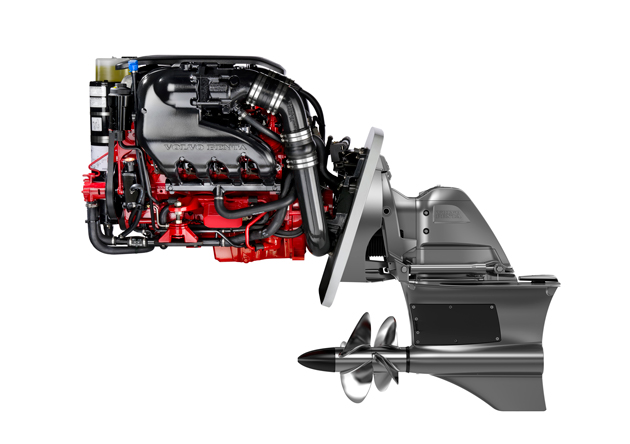If you know boats, you know who Arneson is. Awesome video. I can't even imagine the load on the propeller blades.
If you know boats, you know who Arneson is. Awesome video. I can't even imagine the load on the propeller blades.
I only thought I knew boats. A Surface Drive seems like it would not be as efficient since only part of the prop is in the water, but they claim it is more efficient because of reduced drag. Interesting. The bigger/faster boats I see around me seem to go with triple 300's or so. I don't think I've seen one with a surface drive, or if I did, I did not notice it for what it was. Interesting.
I agree with you Opelguy, that is a LOT of cavitation.
I have been trying to wrap my head around Volvo's new Forward Drive.

Do the props stay exposed during low speed maneuvering and reversing? I'd be a little unnerved by the the twin saw-blade action going on behind the boat while docking.
Super Cool. Like a lot of other things I used to watch the boat racing on Speedvision before it got screwed up by Fox.
Arneson Surface drives have been around for quite a while.
In reply to nderwater:
They will be under water, but exposed.
When it comes to speed on the water, surface piercing props are the only way to go. More pitch, less drag, more RPMs, no cavitation. This is the first video I've seen that shows the props. Usually they aren't visible due to the rooster tail. The way the rooster tail lays down at higher speeds is interesting.
The props are almost like jewelry. In looks and cost.

Here's a blurb about cavitation.
Then there is the issue of cavitation. Cavitation is the rapid formation and depletion of air bubbles produced by the turbulent flow of a spinning propeller. With surface propulsion, half of the propeller is above the surface, and the surface blades create a super-ventilated environment rather than one of potential cavitation. This eliminates the risk of propeller damage due to cavitation, providing for less maintenance issues over time. The surface propeller as opposed to a conventional propeller, operates in a super-ventilated environment and at no stage suffers the problem of cavitation. 'The surface propeller effectively eliminates cavitation by replacing it with ventilation' 'Although the flow over a superventilating propeller blade bears a superficial resemblance to that over a supercavitating blade, most of the vibration, surface erosion, and underwater noise are absent.'
mad_machine wrote: I agree with you Opelguy, that is a LOT of cavitation. I have been trying to wrap my head around Volvo's new Forward Drive.
Those are interesting. The props being in clean water should make them more efficient. But having run aground many, many times in my life, that would terrify me. In the waters I operate boats, there is no way I would own one.
The surface drive props look more like fans than a conventional propeller. I think that's because they're moving a lower density fluid (air/water mix) at a higher flow rate than conventional props that are submerged and moving solid water. That would explain the aeration vs. cavitation comments.
Those have been around for a while. The reason I know is that I was crewing on an offshore race team when they did come out and it was a big deal. To illustrate how long ago that was, Don Johnson was a celebrity way back then, also one of the racers.
The name "Gentry" seems to conjure memories of one of the early adopters or relation to the inventor. They sure were fast and won a lot of the races.
The boats look graceful in the air, but the landings are painful, kinda like going for a two hour plane crash by the time you finish a race in rough water.
I also thought that the idea was a rip-off of the outdrives that you see in Thailand that were around long before the Arneson.

In reply to NOHOME:
There was a thread started here a month or two ago that showed how fast those Thai surface-drive things are!
Surface drives stay half out to reduce friction and drag. The resulting requirement for much higher pitch means that the part that is submerged has a little higher drag, but it is more than offset by the fact that half of the prop is out of the water.
They don't stay out of the water at low speeds. Notice the two 1.5" tubes going down to the cleave of the props? That is so they get some air during slower operation. Otherwise when they are submerged they are basically over-pitched by 100%. Without "frothing" the props, its like trying to start in 4th gear. You would never get to plane. The froth pipes let it act kinda like a loose stall converter until the blades get topside where they do their best work.
They're a purpose-built speed solution. They don't excel at much else other than WOT.
You'll need to log in to post.